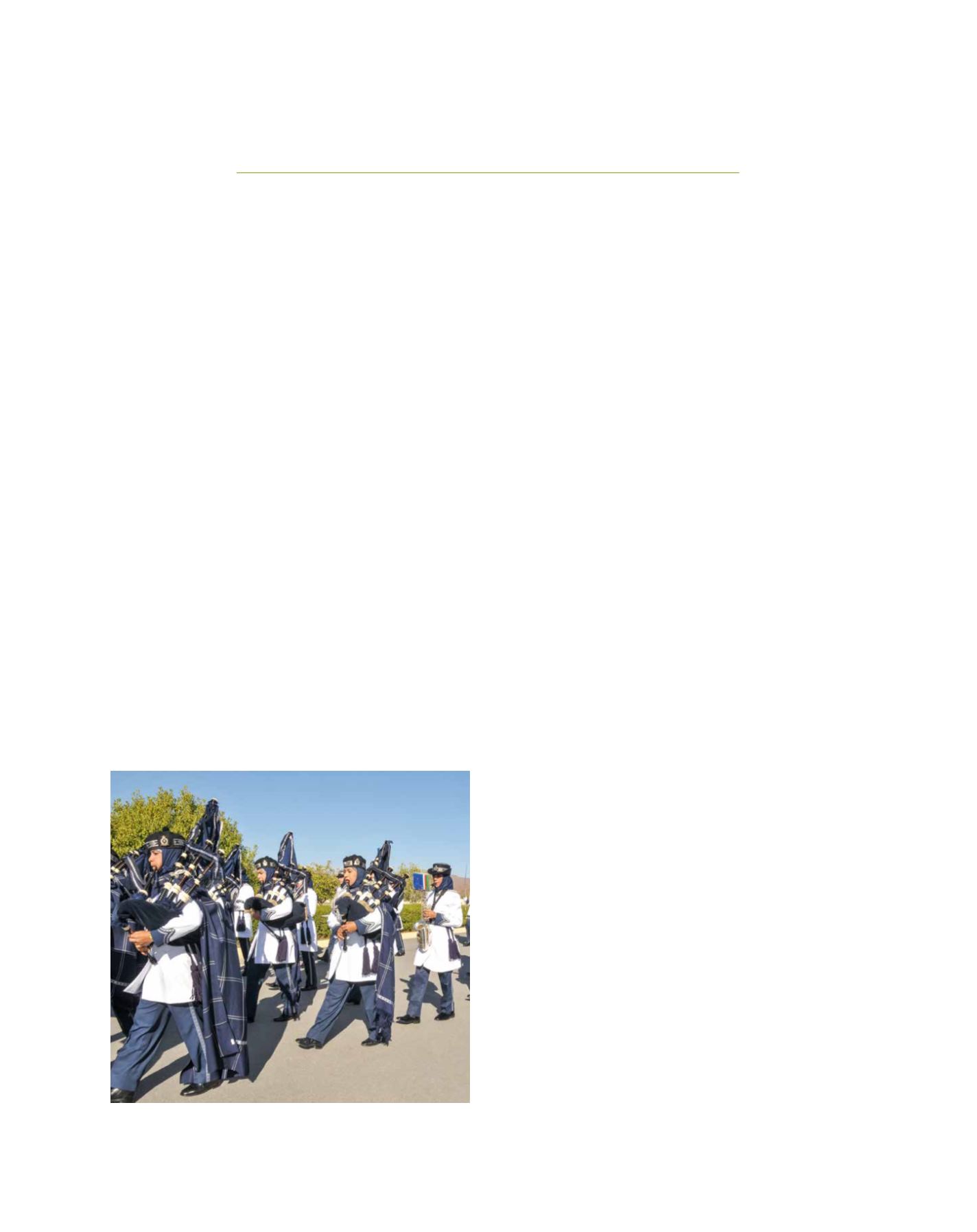

[
] 103
Omani women’s empowerment
Department of Women’s Affairs, Ministry of Social Development, Sultanate of Oman
O
mani women have achieved a great leap in their
development and empowerment. They hold many
positions, including leadership positions, in the
political, economic, social and cultural rights spheres.
These achievements were made possible by the Sultan
Qaboos bin Saeed, who ensured since the early 1970s
that women were the main partner and the second pillar,
alongside men, in advancing development and progress
and building the community.
The Sultanate adopted the approach of empowering women
to achieve its goals in many areas. The first of these was legal
and constitutional developments to promote gender equal-
ity and women’s empowerment. Regulations and laws are
derived from the Statute of the State, which is the most impor-
tant reference in the rights of women. The statute makes no
distinction between men and women in regard to their public
rights and obligations and public office, and it is intended to
achieve justice and equality of opportunity between Omanis.
The basic law was issued by Royal Decree 101/1996 and
amended by Royal Decree 99/2011. It is the supreme legislation
in Oman and all laws and regulations must be issued in conform-
ity with its provisions. Thus its provisions pay a great detail of
attention to women. Article 9 forms the foundations of govern-
ance in the Sultanate, and refers to equality of various kinds.
The guiding principles of State Policy Article 12, on social
principles, are that the state will enact laws that protect the
employee and employer and regulate the relationship between
them. Public service is a national service entrusted to caretak-
ers, and state officials must target the interests of and service
to the community in the performance of their public duties.
Citizens have equal access to public office under conditions
established by law.
Article 17 stipulates that “all citizens are equal in law, and
they are equal in public rights and duties, without distinction
due to race, origin, colour, language, religion, creed, social
status or domicile.”
Article 3 of the Interpretation and General Provisions Act
of 1973 provides that “the words which denote or refer to
the masculine include the feminine. The masculine pronoun,
manifest and latent, includes the feminine.” In light of this
article, Omani legislation refers to the masculine, which
includes masculine and feminine.
The Sultanate joined the provisions of the Convention
on the Elimination of All Forms of Discrimination against
Women under the provisions of Royal Decree 42/2005.
This convention is part of the applicable law of the country.
Government agencies are responsible for the judicial applica-
tion of its provisions and must not issue any instructions or
regulations incompatible with the convention.
Women are entitled to obtain a passport without the
approval of their guardian. Note that the Statute of the State
guarantees freedom of residence and movement to all citizens
as stipulated in Article 18. The Sultanate also adjusted the
land entitlement governmental act under the provisions of
Royal Decree 125/2008, ensuring women’s equal access with
men to a piece of land.
Another area of focus was women’s education. Article 13 of
the Statute of the State stipulates that education is a fundamen-
tal pillar of a state-sponsored community. The state provides
public education, combats illiteracy and encourages the estab-
lishment of private schools and institutes. Omani women have
achieved high levels in basic education and higher education,
as well as accessing to senior positions and specialized areas.
Statistical indicators illustrate this equality. Omani public
schools have an equal percentage (50 per cent) of male and
female students. In private schools, the ratio is 55 per cent
male and 45 per cent female students. Higher education insti-
tutions in the Sultanate admit 39 per cent male students and
61 per cent female, while for those outside the Sultanate the
ratio is 59 per cent male students and 41 per cent female. The
percentage of females in vocational training centres increased
from 43 per cent in 2012/13 to 50 per cent in 2014/15.
Image: Ministry of Social Development, Oman
Women participating in the police force: Omani women represent 42 per
cent of workers in the public sector
G
ender
E
quality
and
W
omen
’
s
E
mpowerment
















